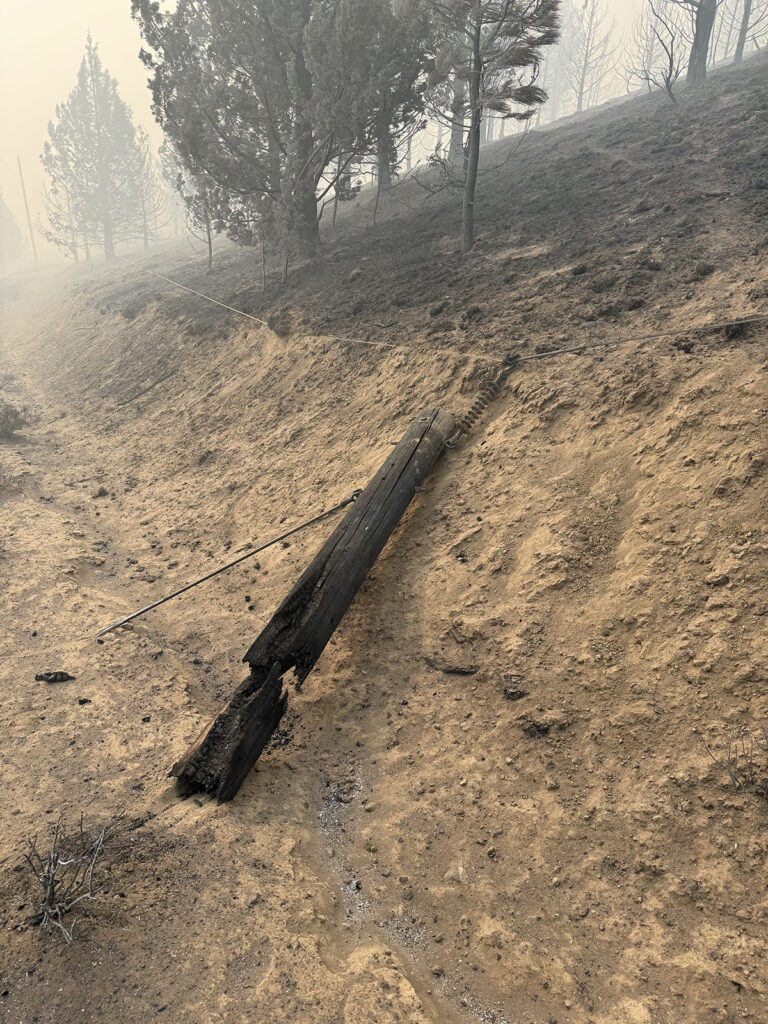
Updated: Sept. 3, 2025
When Central Electric Cooperative CEO Brad Wilson went to bed on Aug. 21, there was a small wildfire burning across 300 acres in the Oregon co-op’s territory east of the Cascade mountains.
By the next morning, the Flat Fire near the town of Sisters had grown to about 4,000 acres as it raged through the high desert’s dried grass and juniper trees, swelling into a massive blaze by the weekend that charred more than 23,000 acres, destroyed at least four houses and forced hundreds of the co-op’s consumer-members to evacuate their homes.
“I was surprised at the size and scope and spread of this wildfire,” said Wilson, who has lived through numerous firestorms in the region. “There weren’t extreme winds, just normal breezes. I was shocked by how quickly it moved and how fast it got down into our infrastructure. I would have figured that it would have been several days before it impacted us. It was literally just hours.”
The fire has so far destroyed 660 feet of overhead wire and about a dozen poles, causing power outages for 614 of the co-op’s 30,500 members, said Brent ten Pas, CEC’s vice president of member and public relations. The outages lasted from 15 minutes to 20.5 hours, and all but six had been restored by the afternoon of Aug. 25. The handful that remained in remote areas were restored over the next several days.

“We de-energized some of our power lines in conjunction with fire officials, wanting to prevent any downed lines from contributing to the fire and provide safety for firefighters and emergency personnel,” Wilson said.
Most of the co-op members affected by the outages had already been evacuated from their homes when CEC de-energized the lines, Wilson said.
“We didn’t really get any inquiries from members until they started coming back home on Sunday,” he said.
The impact on the co-op and its members could have been much worse if CEC hadn’t invested in extensive wildfire mitigation efforts, Wilson said.
“We have spent millions of dollars over the last few years on wildfire mitigation, including undergrounding lines, upgrading equipment and managing vegetation to get combustible material away from our infrastructure,” he said.
As a further precaution, CEC has set over 100 power line reclosers to enhanced safety settings in high-risk wildfire areas throughout its 5,300 square mile territory, which includes national forests. The settings automatically prevent the power lines from re-energizing—and possibly sparking a fire—when they’re struck by a bird, a tree or lightning.
Still, the Flat Fire—which is now about 70% contained—shows just how quickly a small blaze can turn into a huge wildfire and threaten co-op communities, Wilson said. Wildfire season can last through October.
“We do everything we can and yet here we are, with another wildfire burning,” he said. “There’s just no way to mitigate against everything. We can’t completely insulate ourselves from all that risk.”
Erin Kelly is a staff writer for NRECA.